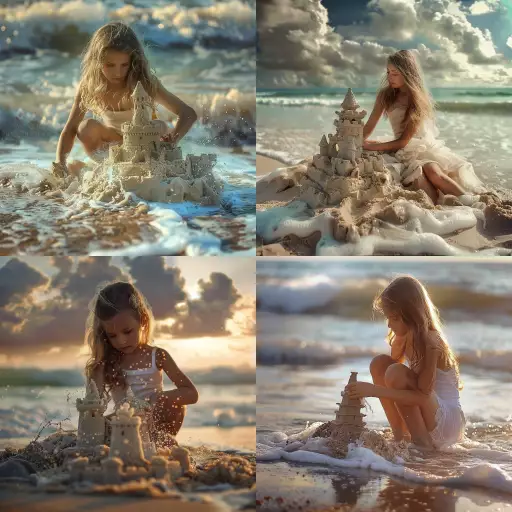Explore the Best AI Image Gallery

Pixels and Perception: AI-Generated Images in Art
The art world is undergoing a seismic shift, fueled by the rapid advancements in artificial intelligence. AI-generated images, once confined to the realm of science fiction, are now a tangible reality, prompting both excitement and apprehension within the creative community. This technology allows machines to produce visually stunning and intricate artwork, blurring the lines between human and machine creativity.
One of the most significant impacts of AI-generated images is on accessibility. Tools like DALL-E 2 and Midjourney empower individuals with limited artistic skills to create compelling visuals, democratizing the creative process. Imagine a student designing a concept for their science project, a writer visualizing scenes from their novel, or anyone transforming their imagination into tangible art.
Expanding Creative Horizons
AI-generated images are not merely replicating existing styles; they are pushing the boundaries of artistic expression. Artists are experimenting with new techniques, incorporating AI as a collaborative tool to enhance their workflows. Imagine an artist using AI to generate variations of a design, exploring different perspectives and compositions, ultimately refining their vision.
Beyond individual artists, AI-generated images have the potential to revolutionize industries. Marketing campaigns can benefit from personalized visuals tailored to specific demographics, while architects and urban planners can utilize AI to visualize complex designs in immersive 3D environments. The possibilities are truly endless.
Ethical Considerations: A Delicate Balance
While the potential benefits of AI-generated images are vast, it is crucial to address the ethical considerations that accompany this technology. One prominent concern is copyright and ownership. If an AI generates an image based on existing artwork, who owns the rights to that creation? The programmer, the user who provided the input, or the AI itself?
Another ethical challenge lies in the potential for misuse. AI-generated images can be used to create deepfakes, realistic yet fabricated media that can spread misinformation and erode trust. It is essential to develop safeguards and regulations to prevent the malicious use of this technology.
The Future Landscape: A Tapestry of Collaboration
Looking ahead, the future of AI-generated images in art appears bright, but it will be shaped by our collective choices. Fostering open dialogue between artists, technologists, policymakers, and the general public is crucial to navigating the ethical complexities and harnessing the full potential of this transformative technology.
The evolution of AI-generated images will likely involve a greater emphasis on collaboration between humans and machines. Imagine artists using AI as a tool to augment their creativity, exploring new concepts and pushing artistic boundaries. This collaborative approach can lead to a richer and more diverse art landscape, where technology enhances human expression rather than replacing it.
As we stand at the cusp of this exciting era, one thing is clear: AI-generated images are not just pixels on a screen; they represent a profound shift in our understanding of art, creativity, and the very nature of human expression.
](https://images.ai-img.art/thumbnails/150/4289d1230b86a96c4d556636c3167bed0ef38f850826549517e4e45db4d87bf7.webp)








](https://images.ai-img.art/thumbnails/150/008b5d5d49667cc2e93a5f8a8adfaa545963da99c39ff0901f5296294636400d.webp)













](https://images.ai-img.art/thumbnails/150/f67d9af3398150f2ab1bcf250717fea134275e2ca896252b54a4d9bb3719f9ac.webp)
](https://images.ai-img.art/thumbnails/150/bddf3ae4a232290858389b933c866ad3be429ef2e25c23a9f4d7713ed6e44d0b.webp)




](https://images.ai-img.art/thumbnails/150/f9584153b4cddd8c9fab611dc10247549b275c59bc173251e37d0935874f9deb.webp)







](https://images.ai-img.art/thumbnails/150/c2c9c48b38fae37f0a457b80b084ed01ba803810fc8f488c8f610c03abc74049.webp)



